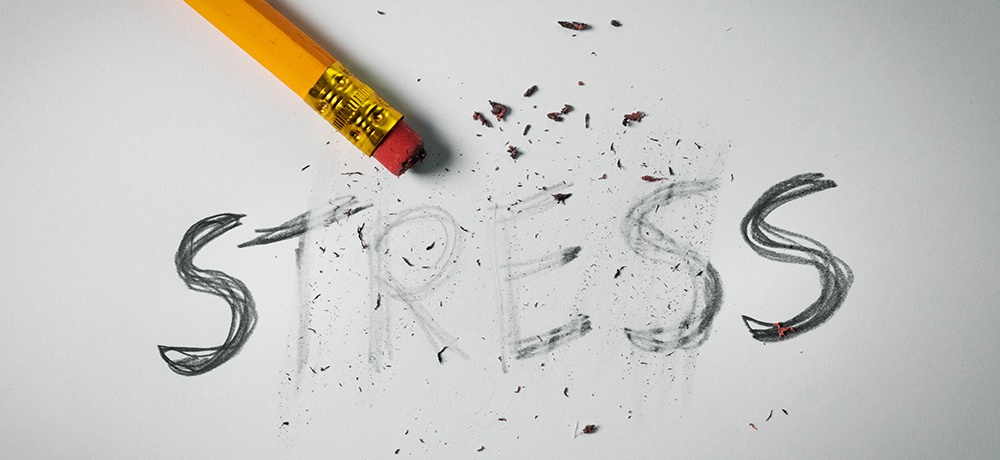Some of my thoughts on dealing with COVID isolation & relieving stress:

As a photographer, I like to focus on "seeing" what's around me. As I take my daily walks (outside when the weather cooperates), I enjoy paying close attention to what I can see.
Sometimes something just catches my eye & I examine it further. Sometimes I actively seek out something interesting along my path. I encourage you to do this and I believe you will find it adds greatly to the relaxation of your walk. Notice all the sounds around you. Notice the patterns, color, lighting.
When I see something lit in an interesting way (frequently backlit by the sun), or an interesting pattern, I stop to take a photo of it. Usually this is done with my phone, since the camera you have with you is always your best camera at the time. Then I go home & from time to time further process these images (cropping & tonal control mainly in Adobe Lightroom). This too is relaxing as I select the best of what I've captured & make each image the best it can be.
So next time you're on your walk. See if you become further relaxed by noticing & appreciating the beauty that is all around you if you are only willing to pay close attention. Gratitude for what you've seen & how it has relaxed you will extend to the rest of your day. Happy hunting.
Dave
Morning Blend interview
Evidence Based Design Art Sample
Evidence from research into medical facility design has lead to some guidelines & understandings of the role of art and nature in the healing process. This blog will lay out some of those findings & give examples.
Collectively, these results are termed “Evidence Based Design Art” or EBD art. The term “biophilia” has been coined to capture the fact that humans have evolved to feel more comfortable and less stressed in natural surroundings. One of the best videos I’ve seen on this phenomenon is “A Darwinian Theory of Beauty”, by Denis Dutton. It can be found by clicking on the link here: A Darwinian Theory of Beauty by Denis Dutton
In it, he explains how humans in all cultures have evolved to share certain types of things they consider beautiful. These turn out to be related to those things found to improve patient outcomes in medical facility environments. Both turn out to involve engrossing nature scenes & particularly photography.
Here is a link to an article on this topic from Health Care Design Magazine in which the link between specific types of art and patient healing is discussed.
Healing Art Article in HCD Magazine
Future entries in this blog, will explore in some detail the results of this research including the guidelines that have evolved from it for art selection in medical environments.
____________________________
Millstadt Falls

In this blog entry, I'll discuss some of what is know about the most and least effective kinds of art to place in a healing environment such as a hospital, dentist's office, physical therapy or any other facility where the desire is to promote & speed healing or reduce stress on patients and staff.
Things to avoid:
- Bodily fluid colors (red, yellow, certain greens)
- Abstract art (requires effort to take in and is least chosen by patients with an opportunity to chose the art in their rooms - some hospitals have an art cart for this purpose & some of the research results stem from noting what types of art are most & least commonly picked).
- Pointy sculptures (do you really want to be reminded of needles or see dangerous or threatening objects when you’re sick?)
Things that have proven to work well:
- Gardens or other access to nature including fresh air
- Windows (best if open to get fresh air, but at least with a view of nature). Surprisingly there are some studies that have shown that video views of gardens do not work. I don't know enough about the specific video setup to speculate on why.
- Engrossing nature photography
There have been studies on the effects of such art on staff as well as patients. It has been shown to reduce the stress of a surgical facility director for instance. Another interesting recent study showed that for nurse break rooms to be effective; they should be placed close to the nurse’s workstation. If not, the nurses will tend not to use them so as to be able to get to patients quickly when needed.
This same study compared break room design options and surveyed nurses for their opinions of each. In order of nurse’s judgments of expected effectiveness here are options that were shown to the nurses surveyed:
- Walk out porch with fresh air & view of nature
- Window with view of nature & ability to open for fresh air
- Window with view of nature, but without the ability to open
- Plant in the room
____________________________